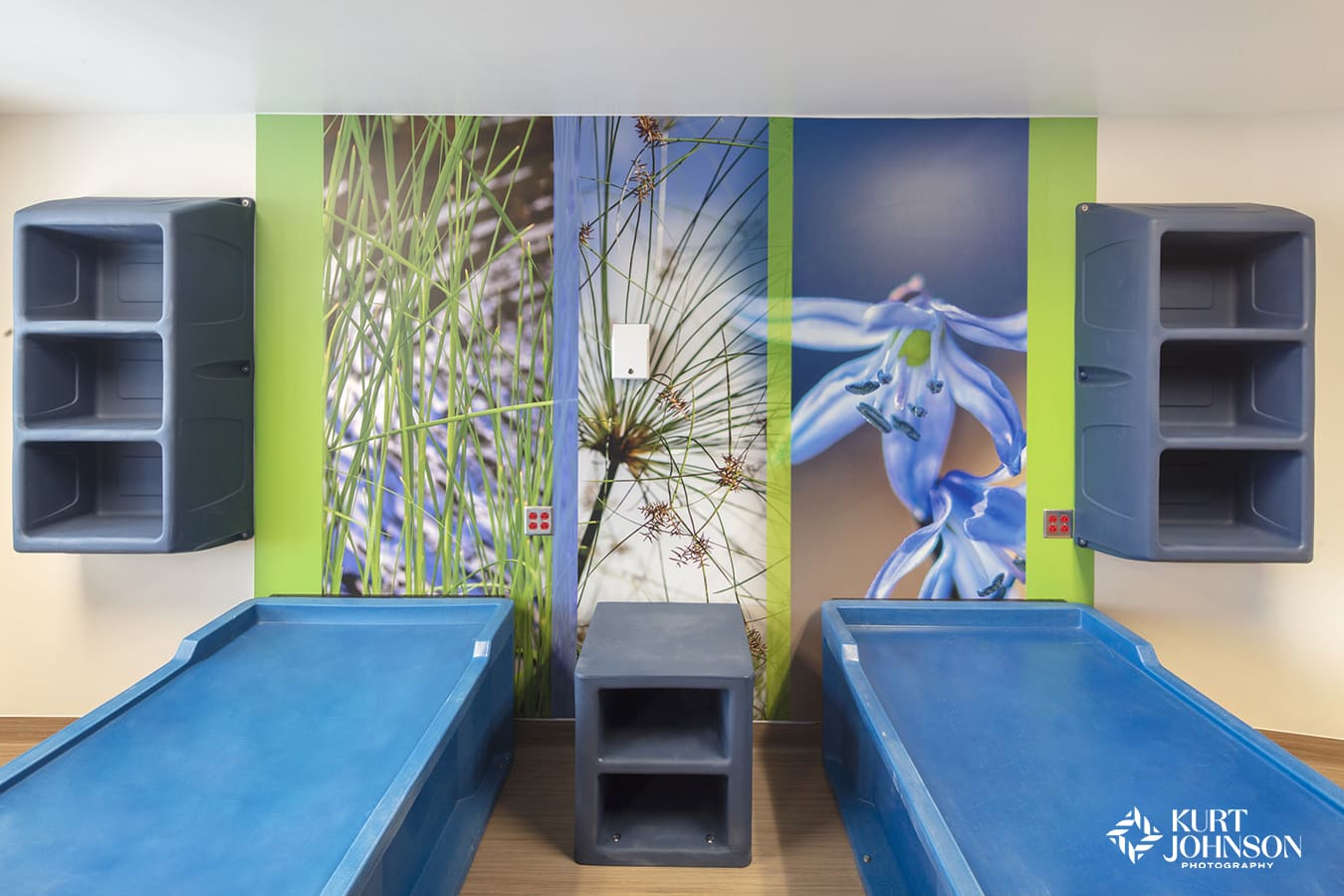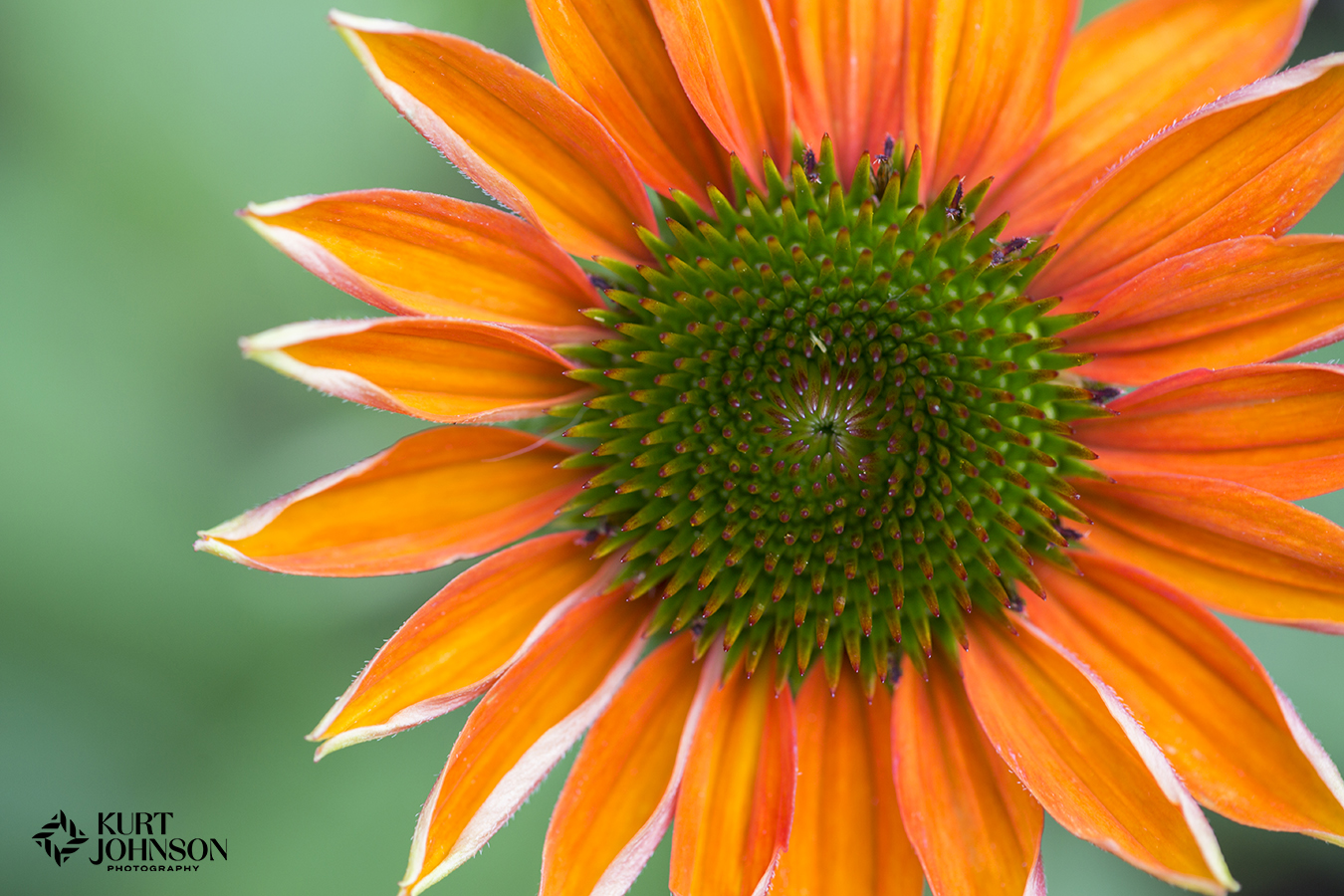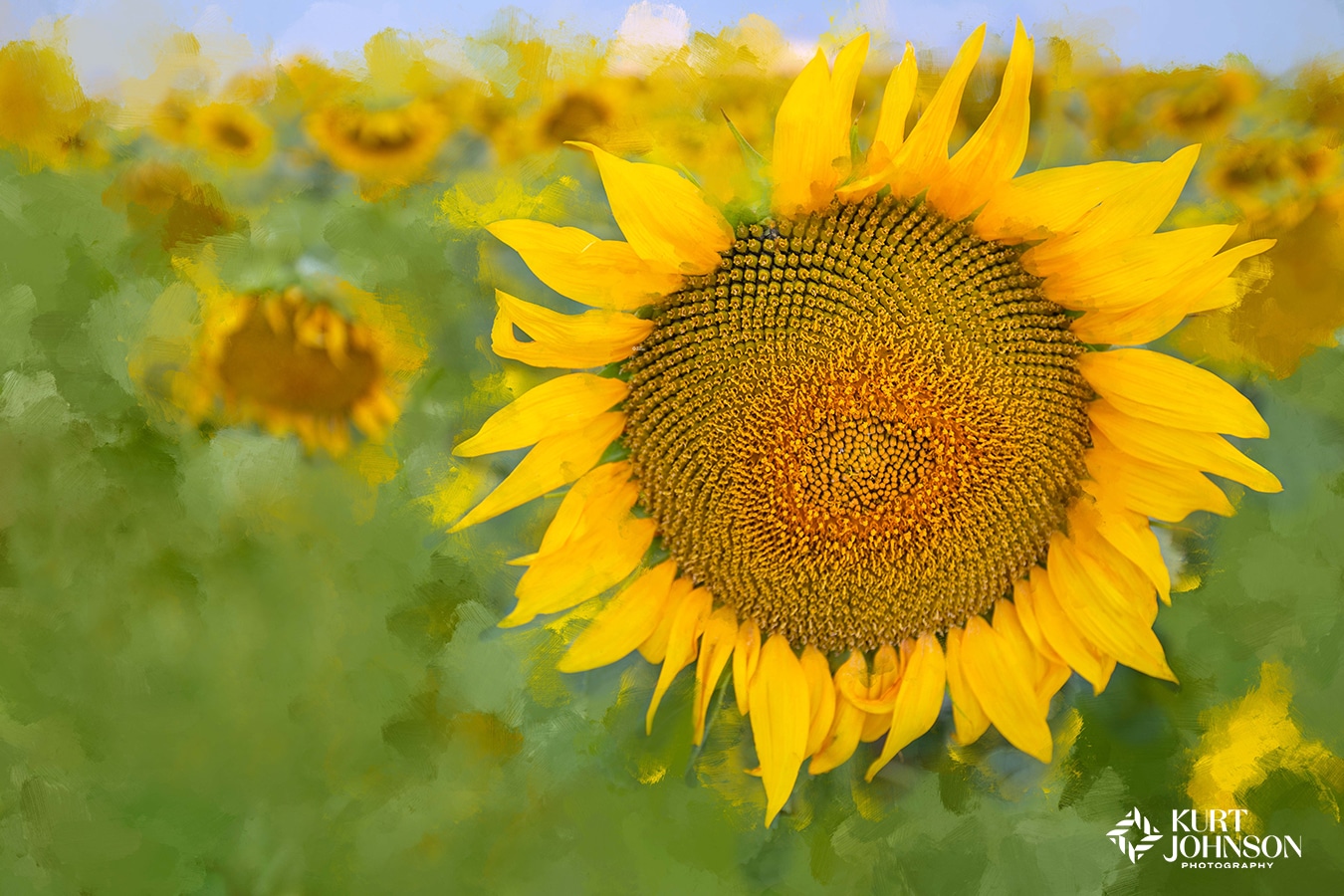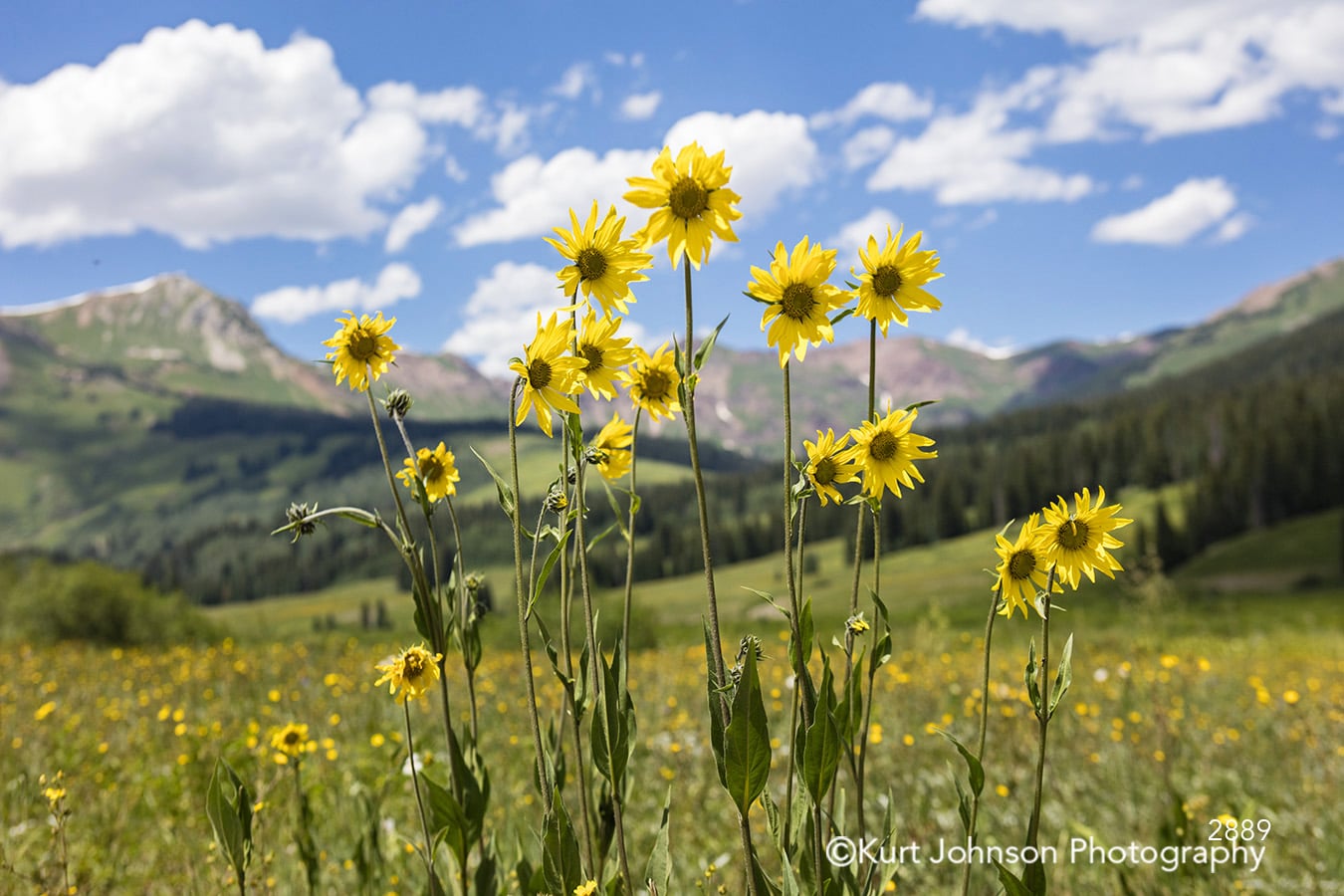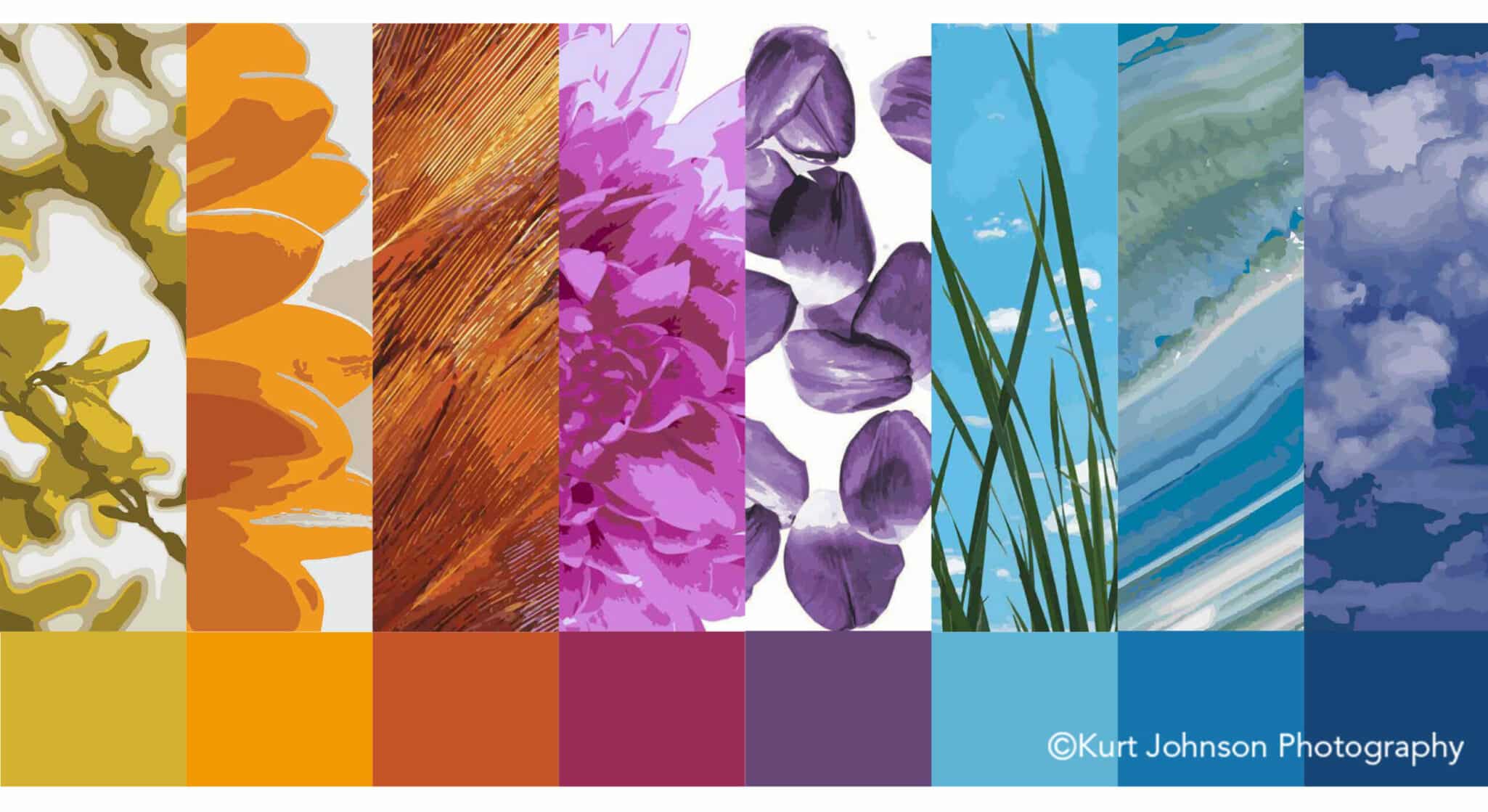5 Best Types of Art for Healing
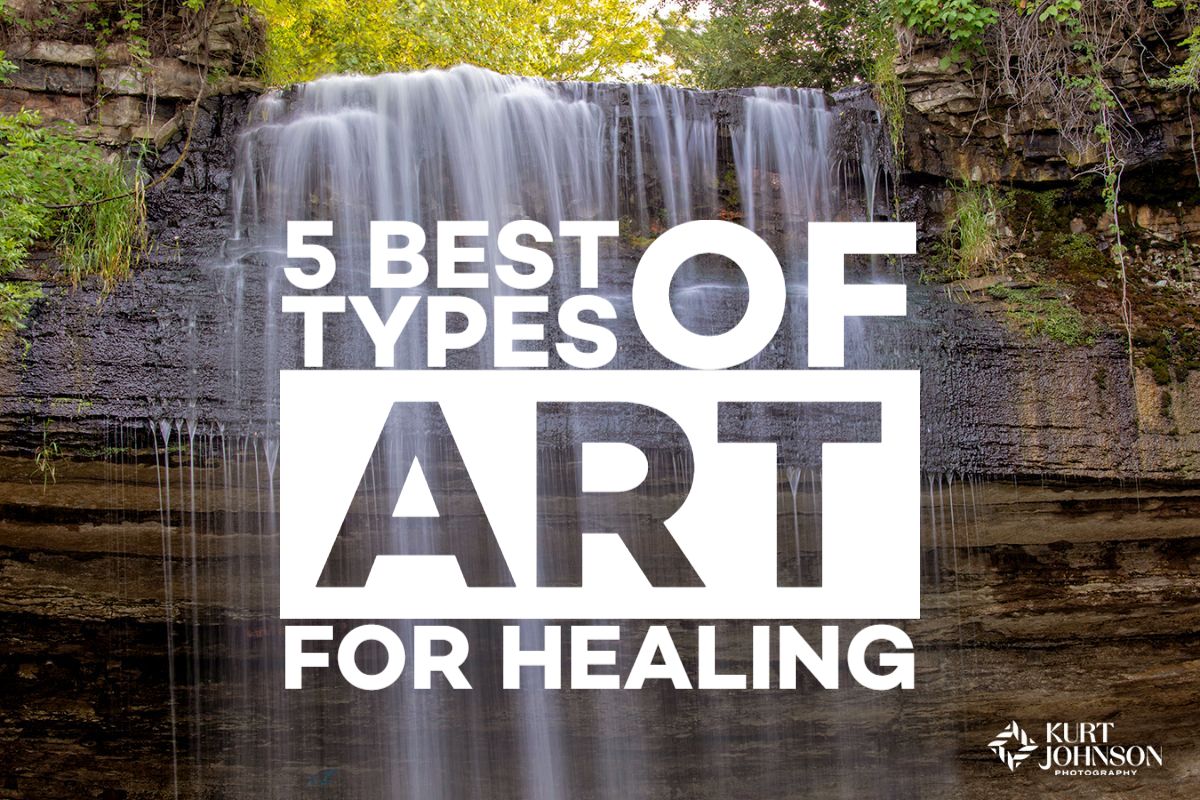
Are you designing a hospital or healthcare environment but aren’t sure which types are the best art for healing? Do you wonder what type of artwork would have the best impact on patients AND staff?
Nature images fulfill our need as humans to remain connected to the natural world while indoors (where we spend most of our time). And using the right kinds of nature images in healthcare settings has LOTS of benefits for patients AND the entire care team.

A long hospital corridor is filled with uplifting healing artwork of close-up orange flower petals and other colorful flower photographs on an adjacent wall.
So how do you determine what the “right kind” of nature imagery is?
Especially if you aren’t an expert in biophilic design . . . and don’t have time to examine all the relevant research.

Boone County Health Center chose framed local nature images with a Nebraska theme to create a familiar and soothing environment for patients and staff at their new outpatient clinic in Albion, NE.
It can be tricky figuring out what art for healing looks like.
And while you have to consider the specifics of where the art will be hung and who will be viewing it, such as:
- Do you need soothing artwork to welcome patients in a healthcare waiting area?
- Are you looking for engaging artwork that will serve as a positive distraction for patient rooms or long hospital corridors?
- Is the art for a senior living community, where artwork needs to be mindful of the aging eye?
- Will the artwork be used to uplift and instill hope in a cancer treatment center?

Soothing blue water creates powerful art for healing printed on Koroseal’s Type II Vinyl Wallcovering in Fulton State Hospital, a nationally known mental health facility in the Midwest.
Following research-based guidelines can help you choose the best art for healing your environment.
Below are the primary types of nature imagery that promote restoration (based on the world-renowned research of Roger Ulrich, the most frequently cited researcher in evidence-based healthcare design, and Laura Gilpin).*
5 Best Types of Art for Healing:

1. Calm or slow-moving water.
Water makes up approximately 60% of our bodies and covers almost 3 quarters of the earth’s surface. We can’t live without it. So it makes sense that calm, slow-moving water imagery makes healthcare patients feel more at ease and lowers heart rates.
- Shatter-resistant acrylic panels lead to patient rooms at this cancer treatment facility in NE.
- A soothing waterscape photograph captured by Kurt Johnson.
- Calm, still water reflects the beauty of autumn trees in this healing landscape image.
- Environmental graphics printed on backlit panels create wayfinding at this Mother Baby Clinic.
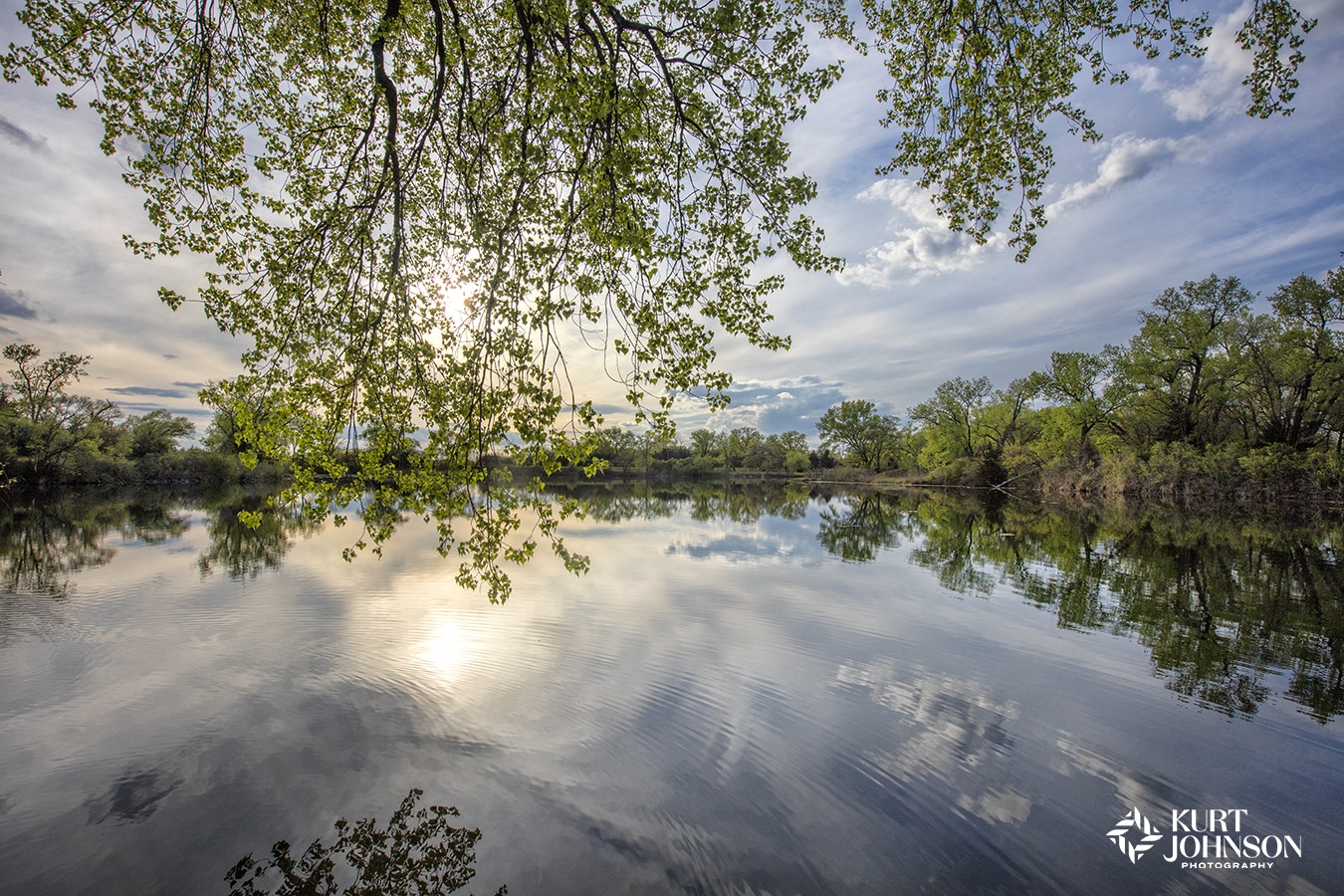

A large-scale wallcovering displays the peaceful image of trees reflected in a body of peaceful water down the hallway of this new hospital.
Couple that with a study by paper manufacturer G. F Smith which found dark blue is the color most associated with relaxation, and you’ll probably begin to understand the potential of water imagery to transform healthcare design and positively impact patient outcomes.

2. Verdant foliage, flowers.
Lush green vegetation is the ultimate symbol of life and growth.
Verdant foliage immediately connects us to nature when seeing it in person or viewing it in images. And flowers, a popular focal point in healthcare and specifically cancer treatment centers lift moods and increase feelings of hope and positivity with their bold colors and unique markings and textures.

This CHI hospital used an almost 90-foot Rex frame to brighten a long corridor in the basement of an older building without access to natural light.
- A detailed flower printed on DIRTT panels eases stress at this MOB.
- A cheery yellow sunflower is a popular image for welcoming patients.
- A wallcovering printed by Koroseal brightens a patient room at an Allina behaviroal health clinic in MN.
- Flowers like this vibrant orange beauty add warmth to any healthcare environment.
- Bright yellow sunflowers are a great way to create a cheery environment.
- Coordinating flower images brighten the hallway of this Allina hospital in MN.
Flowers have been shown to help people feel secure and relaxed, which have been shown to accelerate the healing process.

3. Foreground spatial openness.
Landscape images like the one above rated far above urban images in numerous studies which examined photographs that were best at lowering stress in healthcare settings and aiding in the healing process.
- A trio of framed nature images welcomes patients in the lobby of this medical office building.
- A framed Midwest landscape adorns the wall of this hallway leading to patient rooms.
- The sun illuminates the healing landscape of this wide-open field in the Midweat.
- A curved path stretches past the horizon in this healing nature image by Kurt Johnson.
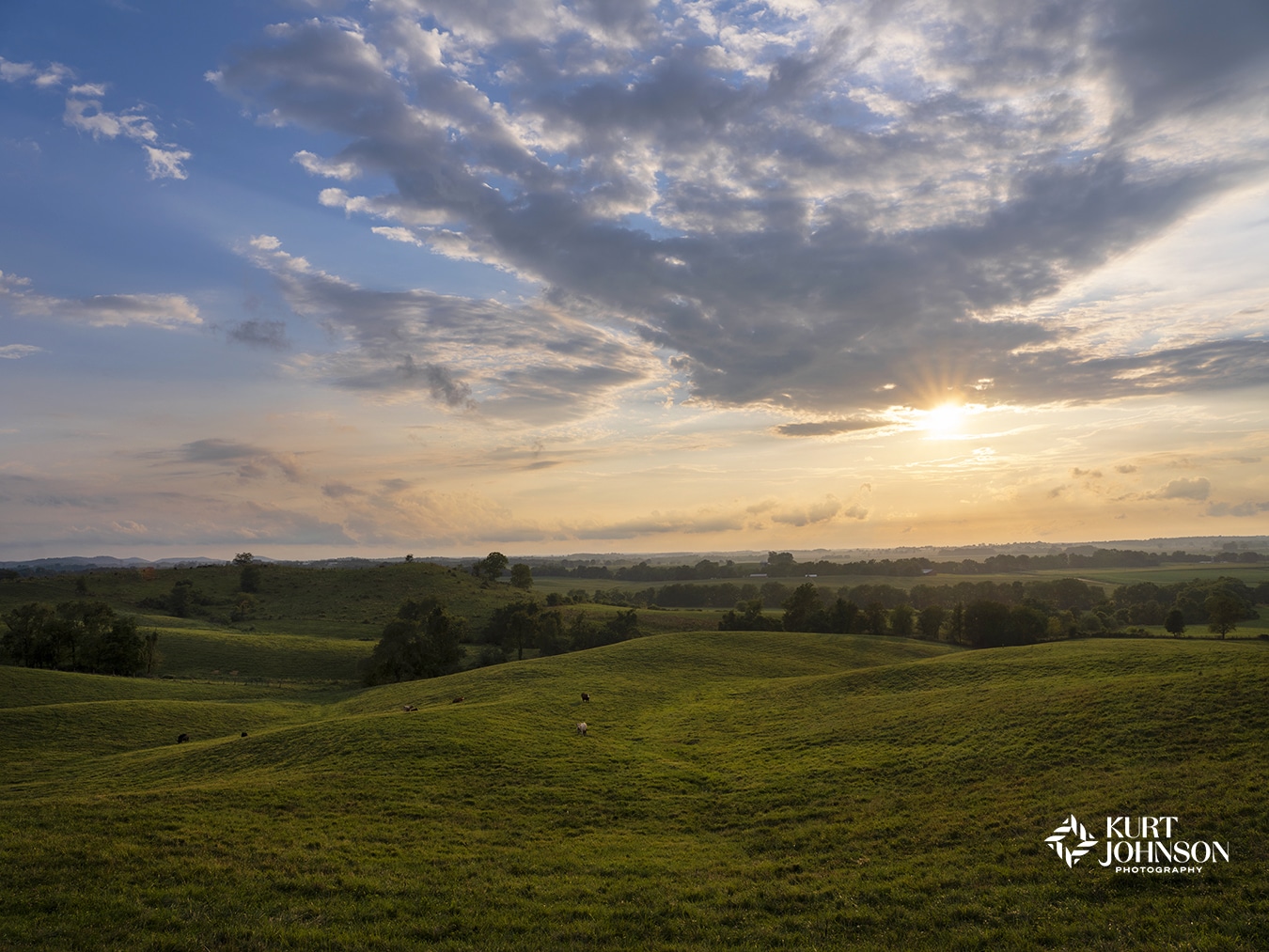
The openness in the foreground gives the viewer a way “in” to the image and leaves room for exploration and imagination, which have been shown to increase viewers’ engagement with the images and decrease stress.
These types of landscape images connect us to our primal need for nature.
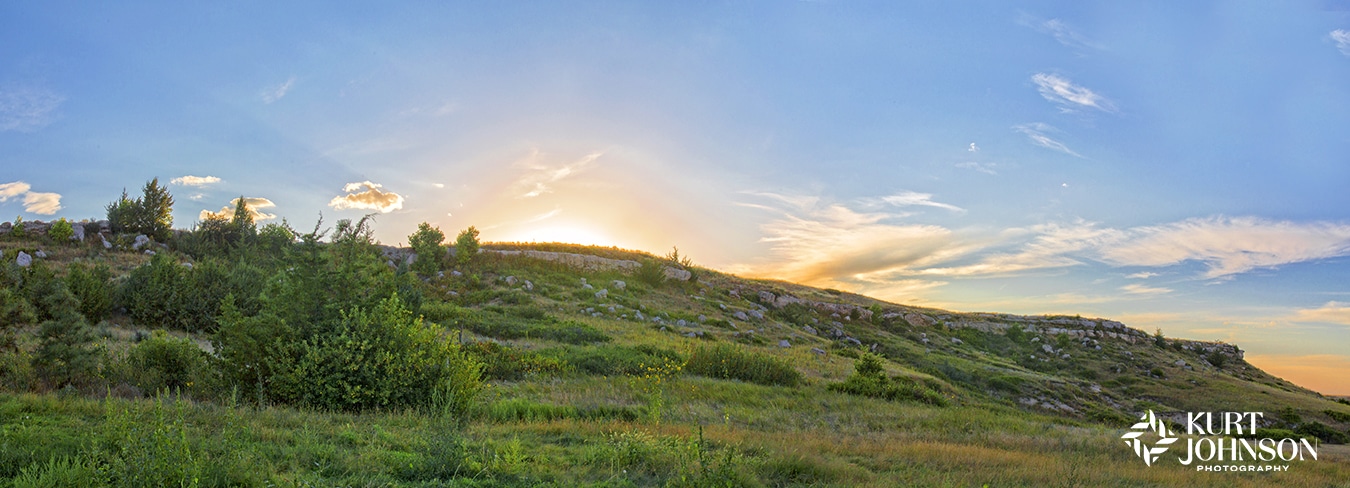
4. Park-like or savannah-like properties.
The fact that we spend over 90% of our time indoors is a shocking revelation that makes our desire to connect to images like these understandable (Kellert 2015).
The canopy of trees in this image connects us to our primal need for protection and shelter.
It’s in our DNA to connect with nature, so even today, viewing landscapes like these still have a strong impact on lowering our levels of stress and instilling feelings of positivity and hope.
Study after study has shown patients’ affinity for images of trees that provide shade and cover from the elements, again relating to our primal instincts to take shelter and survive. These images offer a sense of calmness and protection when viewed in modern-day built environments.

A vibrant environmental graphic featuring graceful wildlife against the backdrop of a stunning Midwest sunset greets visitors at UNMC’s Munroe-Meyer Institute in Omaha, NE as they enter the elevator lobby. Wallcovering by Renze.
5. Birds and other non-threatening wildlife.
This might be the most obvious category of images that support mental and physical wellness and connect us directly with nature.
Stepping outside to the sounds of birds chirping and seeing non-threatening animals like rabbits and horses immediately increase our connection to the outdoors and remind us of our ancestral connection to the natural world.
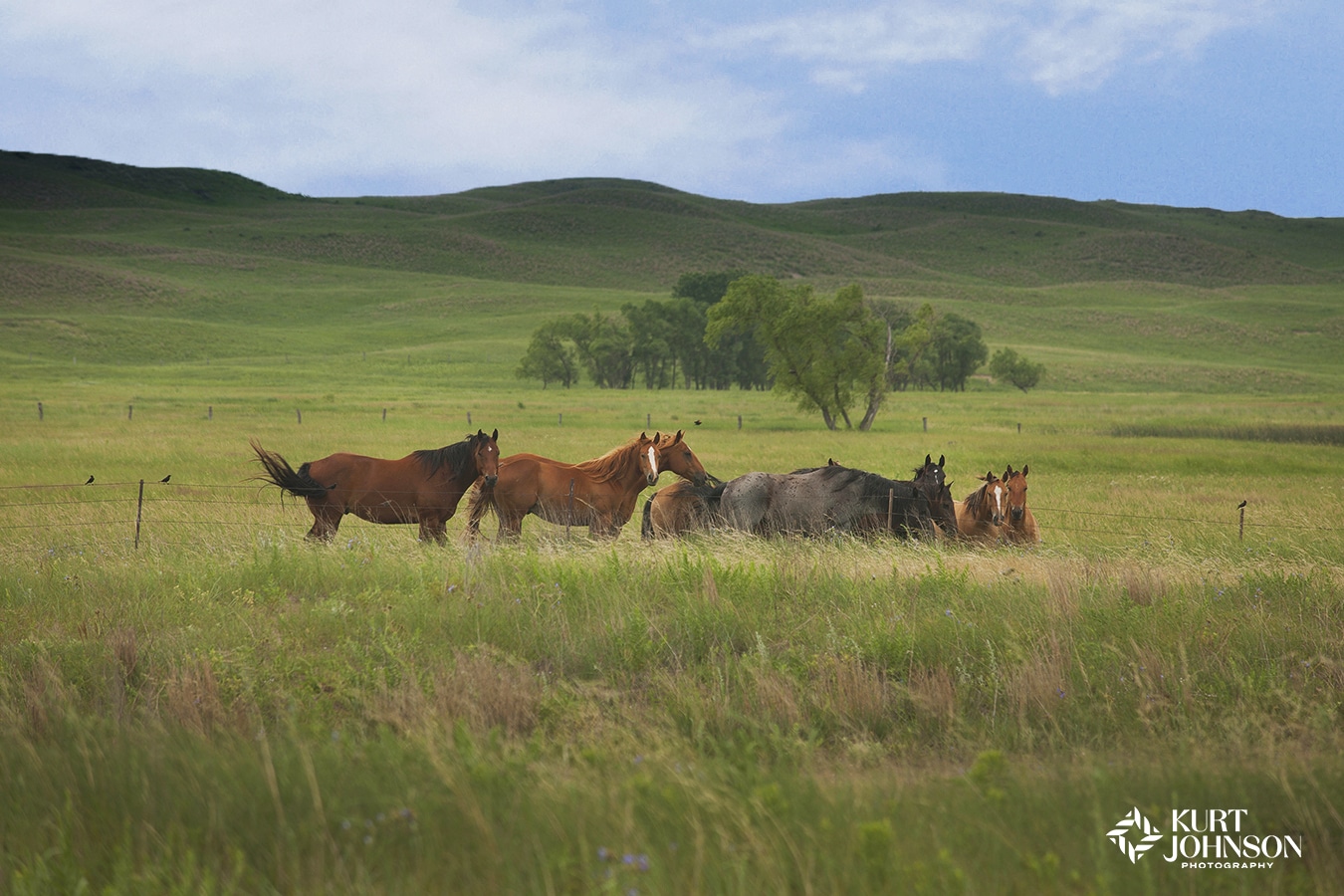

- An oversized canvas wrap brightens the hallway at UNMC’s Munroe Meyer Institute in Omaha, NE.
- Matching textured silver frames highlight a pair of horse images at this senior living environment in NE.
- A stunning red cardinal surrounded by bright green leaves makes a bold statement.
Studies have even shown patients and, specifically, children prefer representational art vs abstract art. For example, pediatric patients prefer photographs of non-threatening wildlife and insects over paintings of the same subject matter.

A custom mural featuring a large yellow flower with graphic design elements brightens the entryway at this Allina Health Mother Baby Center in MN.
Nature images are an extremely effective way of creating calming and inviting healthcare environments that support mental and physical wellness.
Research has shown the importance of using art for healing, in all types of healthcare environments, from cancer treatment centers to hospitals and mental health facilities.
It’s impossible to ignore our innate connection to nature and how specific types of images of the natural world can soothe, heal, connect and restore health in wellness environments.
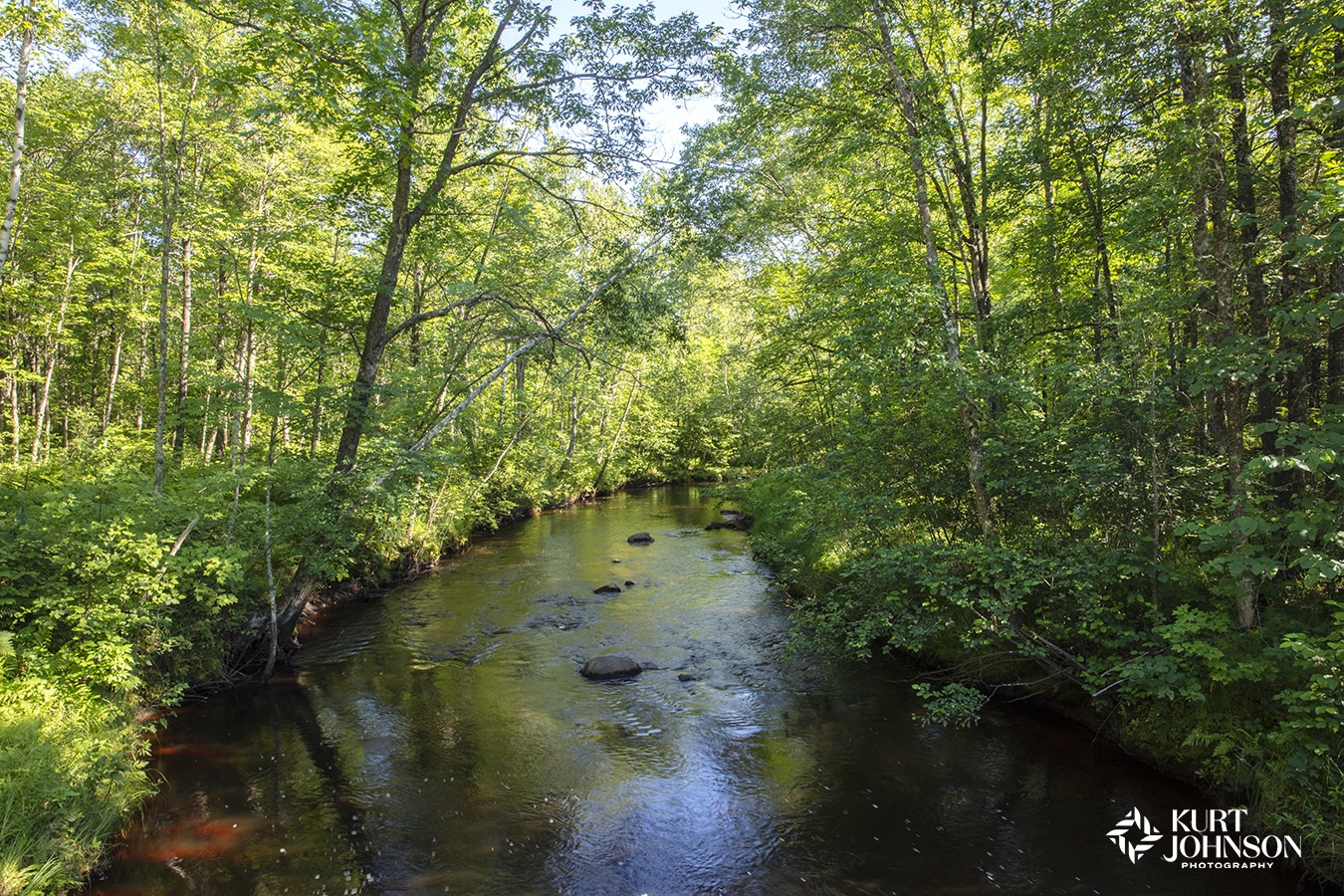
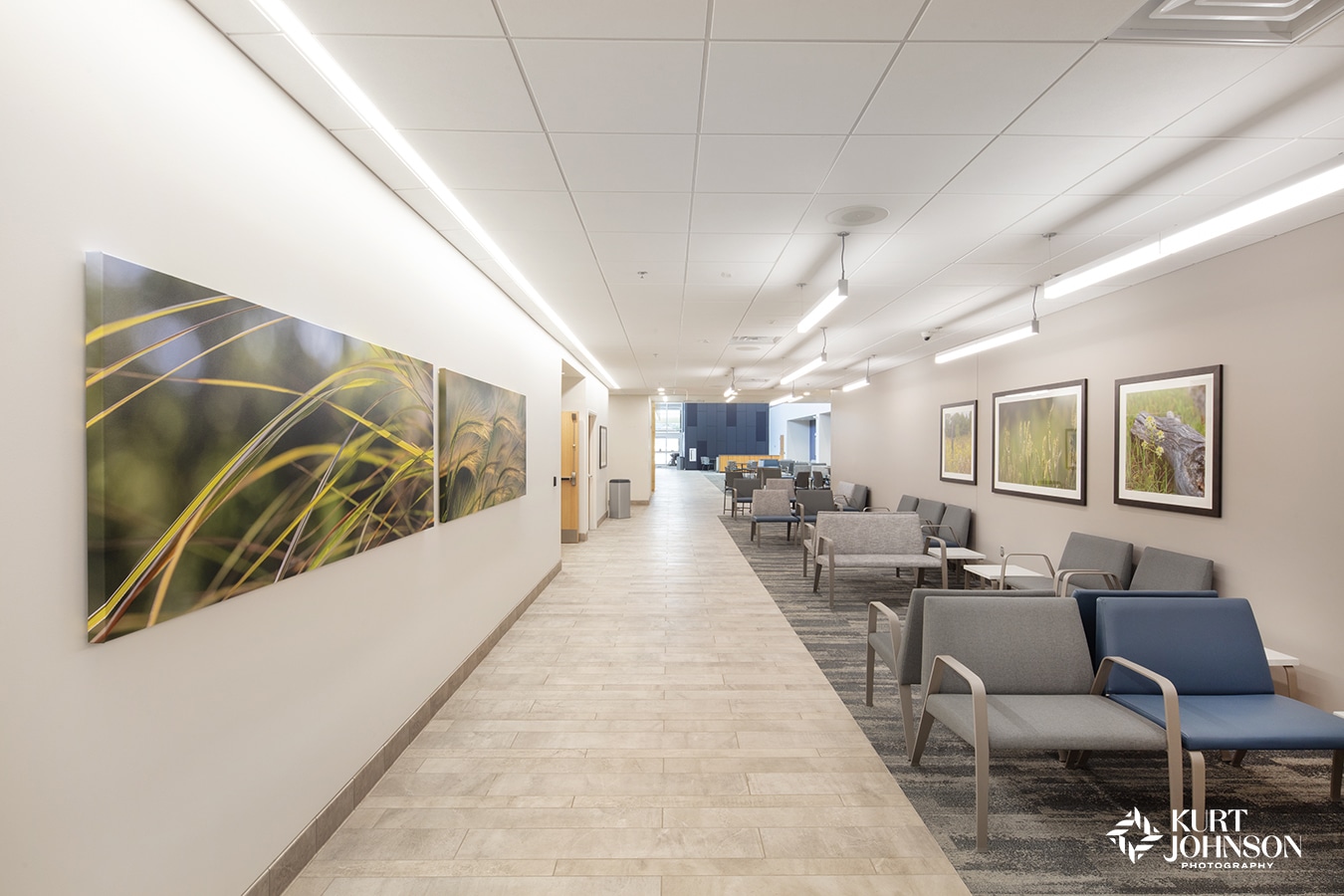
Corridor of Boone County Health Center in Albion, NE features gallery-wrapped canvas and framed nature images by Kurt Johnson.
*Ulrich R.S. and Gilpin L. (2003). Healing arts: Nutrition for the Soul. In S.B. Frampton, L. Gilpin, and P.A. Charmel (Eds.), Putting Patients First: Designing and Practicing Patient-Centered Care (pp 117-146). San Francisco, CA: John Wiley & Sons.
Categories: Healing, Healthcare, Installations, Photography, Research






